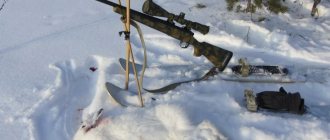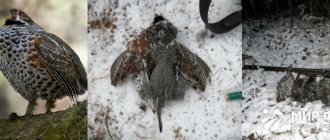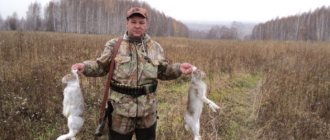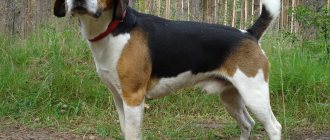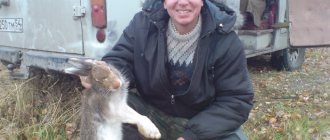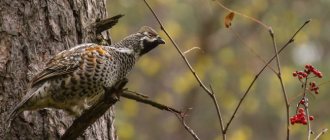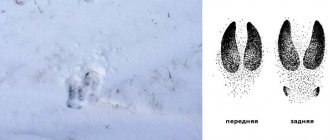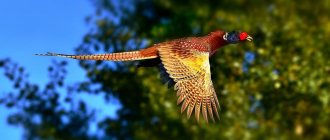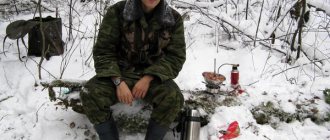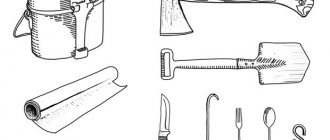- February 11, 2020
- Hunting
- Igitkhanyan Alevtina
The hare is a fairly valuable fur animal. Because of this, hunters love to hunt it. You can meet a hare in the central part of the Russian Federation.
Due to their huge population, the law does not prohibit hunting them. However, not all fishing methods are permitted. Not every region of the Russian Federation has white hares. Therefore, where there are few of them, catching with snares is prohibited. This is provided for in the hunting rules. The hunting rules even provide special requirements for snares for hares. They determine the length, thickness of the loop cables and the size of the loop hole.
Some hunters believe that creating loops on a hare is the norm. Therefore, this particular fishing method is actively used.
Hare hunting
Many hunters wonder how to properly place loops on a hare? It’s not difficult to do, you just need to know a few recommendations.
The current legislation of the Russian Federation does not allow catching hares using snares. There are only a few exceptions. Catching the white hare is permitted in some northern regions of the Russian Federation.
Hunting a mammal using snares in winter is the most ancient way of catching a hare. The best part is that these loops can be made at home.
It is not recommended to use loops made of single-core wire. The diameter of the wire should not exceed 0.8 mm, and also be no longer than 80 cm. No harm should be done to other wild animals. This list can be found in the rules themselves.
In populated areas, snare hunting is dangerous. This is bad not only for the catcher himself, but also for others. Very often hunting dogs get caught in such snares. In some cases this ended in the death of the animal. There can also be negative outcomes from hunting, so you shouldn’t forget about it, and it’s very important to know how to put the nooses on a hare correctly. After all, the consequences can be disastrous.
How to make a net-shaped hare snare
In addition to the loop, the hare can be caught using a net, which is knitted from nylon thread with diamond-shaped cells measuring 66 mm (autumn) and 77 mm (winter). Its height should be 1.2-1.3 m, width - 30 or 50 meters. The net must be attached to pegs or trees using a nylon cord so that it falls on the animal when it gets caught in it. At the same time, the hare is rutting. You can make a trail using a net: a rectangular mesh 1.0-1.2 meters high is attached to pegs at the bottom, and at the top with rings and a cord, stretched similarly to the method described above. At the same time, when the animal gets caught in the net, the thin branches on which the rings are attached break, catching the hare.
How to correctly identify a hare's footprint
Some amateur hunters are wondering: how to put a noose on a hare? To do this, it is important to know how to install this device and what this animal is.
The hare is a very smart and cunning mammal. Thanks to his intelligence, he is good at confusing his tracks. Therefore, when we put loops on a hare in winter, we pay attention to the direction of the tracks. The animal can run along the path and jump from side to side. Because of this, his traces become double. And if an animal runs in circles or in loops, then the direction of its tracks will be difficult to predict. Only the most experienced hunter can do this.
Brown and hare hares have different tracks in winter. If the first one has them more oval and long, then the other one has them round and with a short step. And their parallelism in a sitting position is the main distinguishing feature compared to other animals. The tracks of other mammals may be slightly clubbed. Every hunter is obliged to correctly determine the time of the hare's tracks. For example, if snow is falling and at this time the trail is clearly visible, then it is probably fresh. And when the weather is without any precipitation, it is necessary to examine the trail more carefully. This can be determined as follows: if the edge of the track is smoothed by the wind, then it is old.
Fresh trails are ideal for installing loops. Therefore, it is better to do it in such places.
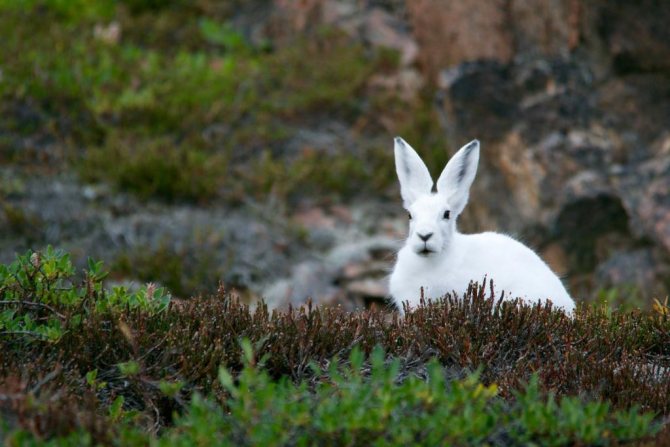
Choosing a suitable location
Young hunters often wonder how to put nooses on a hare and where is the best place to do it? The main place for attaching this equipment is on hare trails. In the winter season, they are quite easy to spot near the hare’s feeding areas:
- Brown hare - parallel to farmland, fields, vegetable gardens, meadows and meadows, under stacks and stacks of straw, and also closer to mid-winter in gardens.
- The white hare is found closer to ravines and floodplains overgrown with young willow trees, in young aspen and birch forests, in the garden and on a summer cottage.
A hare trail can be called a piece of ground in the snow on which there are at least three hare tracks or there are clearly visible tracks of at least two hares. But you need to look more carefully so that it does not turn out to be a hare two or three. The easiest way to find a hare is where the snare is difficult to see and the path is limited on the sides.
Some hunters are wondering how to put nooses on a hare in the summer? To do this, you need to choose the right place. The installation location is most often chosen in bushes or near trees, preferably between them - this way it is more convenient to tie the trap and it will be less noticeable. Place the loop above the path, at a height of 10–15 cm from ground level, so that the hare runs head first into it.
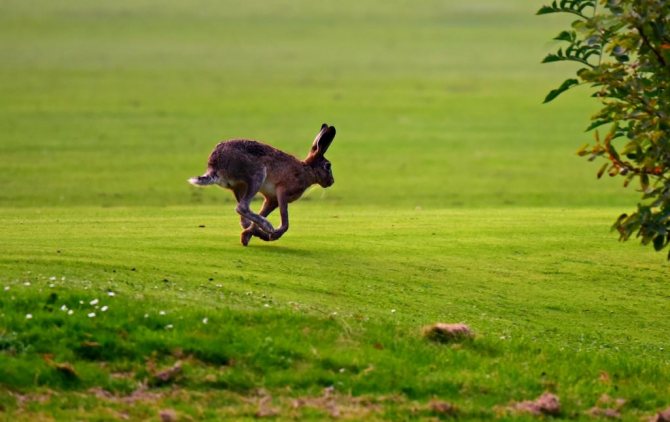
Measures to combat “eared pests” in a summer cottage
The furry animals are quite cunning, and to prevent them from getting into the forbidden territory, you need to fence it off with a reliable fence. Make sure that there are no holes or other openings around the perimeter of the site that could provide entry.
Many gardeners, due to a long absence from their summer cottage, as well as for other reasons (for example, during severe frosts), cannot immediately determine who exactly harmed their plantings. The fact is that “wise” mammals go out on their “hunt” exclusively at night. This is not surprising, because at night no one will notice the animals, and they can continue to cause harm to the plantings.
The main signs of the appearance of hares on the site:
- footprints in the snow from hare feet;
- burrows on the site;
- traces of mammal droppings;
- damaged or completely destroyed shoots of young plants. It may even seem to the gardener that someone deliberately pruned them;
- the bark on young and mature trees is either completely or partially absent up to one meter in height.
Some gardeners are very skeptical about civilized methods of fighting hares. You can take a gun and not only get rid of uninvited guests, but also get food for dinner. But it’s not safe to shoot at your summer cottage, especially since there are more civilized methods of fighting mammals.
If a gardener appears at a summer cottage only in the warm season, and in the winter the area is left unattended, then it will be very difficult to defeat uninvited “guests”. It is much easier not to plant trees and shrubs on the territory that would attract hares. As we already mentioned, it can be plum or cherry.
Reliable fence
To prevent cunning hares from getting into the area, you should build a reliable fence - a high fence. It is also worth making sure that along the perimeter of the entire site there are no manholes, holes, or openings through which “smart” hares could crawl into the territory.
If a summer resident does not have the opportunity to build a reliable fence around the perimeter of the entire summer cottage, only garden trees can be fenced. In specialized stores today you can buy plastic and metal nets of various prices and configurations that will protect fruit trees and garden shrubs from hares.
You can also build around a garden or individual trees a material that has been proven over the years - the Chainlink structural mesh. It must be dug into the ground to a depth of at least twenty to thirty centimeters. Otherwise, the hares will be able to dig under and still break through to the treasured trees. The height of the mesh must be at least one meter. Very often, gardeners make protection from chain-link mesh for each tree separately.
The device allows you to drive hares away from your summer cottage without the use of chemicals or other harmful substances. As a rule, an ultrasonic repeller usually comes with a special stand, so the device can be easily installed in the garden. Depending on the modification and configuration, the infrared sensor is triggered at a distance of 10-12 meters (sometimes more or less).
Some repellers are equipped with a motion sensor. The device detects the slightest vibrations in the area, which indicate the presence of a hare or other animal on the territory, and a sharp sound or light signal begins to sound, scaring away the uninvited guest.
Hares by nature are very, very timid creatures. To prevent them from harming garden trees, you should hang pieces of fabric, film, rags, preferably dark in color, on the branches. An animal in the dark will not be able to see what exactly is swaying near the tree, so blowing wind will scare away the animal. Some gardeners specially impregnate rags with a solution such as Lysol so that an unpleasant odor spreads around the plantings and prevents animals from approaching the trees.
Strong odors
The nimble hares cannot stand the smell of mothballs. This fact can be used to scare away animals from the area. For example, you can place containers of mothballs around the perimeter of the orchard.
Hares hate the smell of black pepper. This traditional seasoning, which no doubt is in every housewife’s kitchen, should be sprinkled around the perimeter of the garden or (which will be more effective) around each tree. It is worth remembering that snow, rain and wind will reduce the effectiveness of the “repellent” and the pepper will have to be renewed regularly.

Hares also cannot stand the smell of fish oil. Products of animal origin can be purchased at any pharmacy. A small amount of fish oil should be applied to a swab, and then strung on a thread and tied around a tree trunk. If it is a bush, then cotton swabs can be hung directly on the branches.
Repellents
Chemicals from the group of pesticides that repel hares from garden plantings are called repellents. The most well-known brands of repellents are: Vitax Stay Off and Growing Success Wild Animal Repellent.
Hares are very, very “dexterous” mammals that are ready to do anything to get food. In order to prevent “cute” animals from settling on your site and systematically destroying your garden, it is necessary to take preventive measures. That is, prevent hares from entering the site from the beginning, so that you don’t have to scare away the furry animals for a long time and painfully. And one more important point: hares will never try to get into an area guarded by a dog.
Hinge installation location
The most important thing is to determine the correct location for installing the loop. Hunters attach special importance to this issue, since the result of the hunt depends on the right place.
However, some hunters have a completely different opinion. And they do not at all believe that it is thanks to a well-chosen place that good fishing results can be achieved. But they all follow one main rule - under no circumstances should you cross a hare’s path in the immediate vicinity of the place where the loop is installed:
- If you cross the path, there will be footprints on it. And a hare running past will be able to detect them and will not fall into the snare.
- In addition, not only should you not cross the path, but you should also not come close to the hare paths themselves. Hares have a very well developed sense of smell and are very vigilant. And if they also find tracks near the trail, then the chance of catching a mammal in this case is not at all great.
There are supporters of the idea that it is possible to follow the tracks of a hare. The most important thing is to get to the trap itself and under no circumstances turn off the path. The hare will become interested in the tracks and follow the hunter.
As for the characteristics of the hare’s behavior, it should be noted that he is afraid exclusively of human tracks, but, on the contrary, he is not afraid of ski tracks. Therefore, as an option, you can use the second method.
We don’t plant “tasty” trees
Those summer residents who appear on the site exclusively in the summer experience great difficulties in the fight against furry pests. So, if the plot remains unattended for a long time, it is advisable to refuse to plant trees in the garden that hares are not indifferent to. It is better to limit yourself to cherries and plums, which have already been mentioned. This will definitely help you defeat harmful mammals.
Sometimes gardeners resort to fencing garden trees, not being able to build a high fence on their territory. Today you can find a variety of metal and plastic nets on sale, with which you can easily protect fruit trees and shrubs from pests.
Special plastic tubes that are placed on the trunk of a young tree with a non-grown crown are also in demand. Both store-bought designs and homemade products are suitable.
The garden can be fenced with a chain-link mesh; this material is dug into the ground at least 20 - 30 cm, so that animals cannot get to their favorite trees. The structural mesh must have a length of 1 meter. Gardeners often create such protection for each individual tree.
Installing loops on skis
There are several rules for this installation. Let's look at some of them. For example:
- It is extremely important for a hunter to learn how to set a noose on a hare - with an approach on skis. At least the ski trail won’t scare the animal and it won’t run away. It is best to approach the installation site from the side.
- As for the path, it is not worth crossing it, just like in the first case. And to do this, when installing the loop on the hare, you need to move in the direction strictly along the edge. And the best way to approach this place is from the forest.
- Under no circumstances should there be absolutely any human traces along the trail. The animal may stop, become interested in the hunters' tracks, and ultimately run away in the other direction.
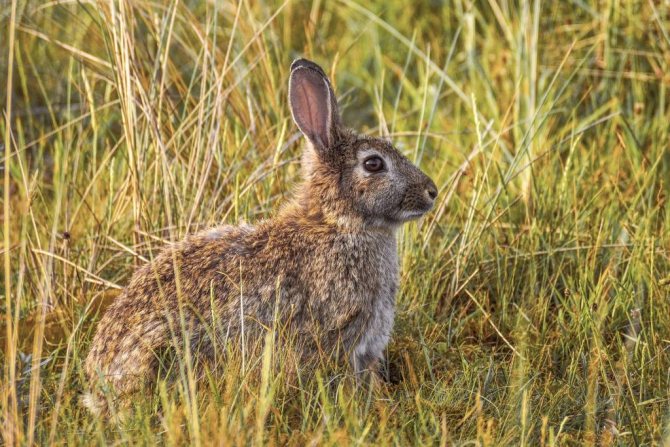
Installing a snare
The hare has paths along which it constantly moves around the land. These are the places you need to find in order to set a snare on them. A prerequisite is the freshness of the traces. If you are not sure that the hare ran along the path yesterday, then do not set a snare there.
As a rule, snares that are installed along the forest belt, near dense bushes, and on the edges of the forest show high efficiency. You should not place loops in dense forests or places where hounds may be hunting.
The loop itself is installed at a height of about 15 cm above the snow, perpendicular to the surface. When the hare gets caught, he tries to get out, so he twists the wire. Sometimes this leads to a break.
To avoid such a problem, you need to tie a nylon thread to the end of the snare and hook it to a tree, but the loop must maintain its perpendicular position.
If there are no trees nearby, it is recommended to drive a peg and hook a snare to it. There is no need to be afraid that the hare will pull out the peg and run away with it.
This can happen, but it will definitely get caught somewhere and won’t go far. It will be easy to find him by following his footsteps. The location where the snare is installed should be checked after one or two days.
It is better to approach the places where snares are installed on skis, because hares treat human tracks with caution. If the installation is carried out among bushes, then it is better to place several of them with a distance of 3-5 meters between them.
How to properly prepare the installation site
It is better to install hinges in dense bushes on walkways. Thanks to this, the animal will not be able to curl up. He will not be able to detect the loop. Since the loop is practically invisible among the branches. The branches help camouflage it. It is best to fence the path. To do this, you can stick several thick branches on the other side of the path. In situations where the loop is attached to a tree, it is recommended to stick thin branches into the snow around it. Thanks to this, they will disperse attention and thereby hide it. If you camouflage the snare very well, you can significantly increase the chance of catching the animal. If there is nothing next to the path, for example, the path is laid in a field, you need to stick the rods directly into the snow, next to the path. The result will be an imitation of wood. It will be difficult for the animal. Therefore, if he decides to drag the branch with him, he is unlikely to be able to do it. Or a short distance.
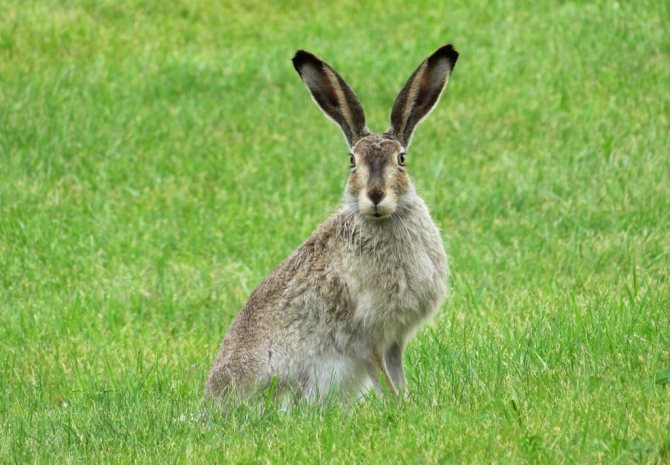
Installation
A few simple tips:
- Loops and snares must be installed using objects from the surrounding vegetation, as secretly as possible. If it is necessary to install it in a field, in the absence of forests and bushes, it is better to drive a peg firmly into the ground, or use a “potassk” - a long and thin stick that the hare can drag along with it until it hits something. will get caught.
- The working diameter of the loop depends on the expected size of the prey, approximately 22-28 cm. A loop of a smaller diameter will work behind the neck, and will quickly cause the death of the animal. However, the excessively small size often forces the hare to bypass the trap.
- To avoid spontaneous tightening, after setting the required size of the loop, you should make a small bend that secures the movable ring, without interfering with the operation of the trap.
- When installing, it is optimal to place the loop 15-20 cm above the surface of the path. To fix the loop in space, we use the existing small branches; if necessary, you can stick additional support points into the snow next to the path.
- A wire loop screwed directly to the support can be fixed using its own rigidity. However, a wire that is fixed rigidly can be broken by a scurrying hare. To avoid this, a second small loop was made (see above “how to make a loop with your own hands”): a strong rope or cord is tied to it, and with its help the trap is secured in place.
- It is better to stick several branches on the sides of the guarded loop, imitating thickets. They will direct the oblique one in the direction we need.
Hinge attachment process
A hare trap can be made from wire. Doing this is not only not difficult, but also convenient. Steel wire is ideal. Its thickness should be no more than 1 mm. It's good if the wire is soft. It can be easily tightened later during installation. The average diameter of the loop is 20 cm. This is the norm for an ordinary hare. If you install a loop on a brown hare, you can make it bigger. And for a white hare, a smaller wire diameter is suitable.
Hinge installation process:
- To fasten the loops, you need to rub the wire on the wood. This way you will be able to reduce the smell. Since animals have well-developed senses of smell and instinct, so that the hare cannot sense danger, rub only the tree on which the noose will be installed. If it is a spruce forest, rub the spruce; if it is an aspen forest, rub the aspen.
- You need to attach the loop directly above the path. This should not be done too high, at a height of no more than 15 cm. The wire should be attached either to a thick branch or tied to a tree trunk. It all depends on the type of loop. To fix it, you can wrap it 5 turns around. Then thread the other end through the loop.
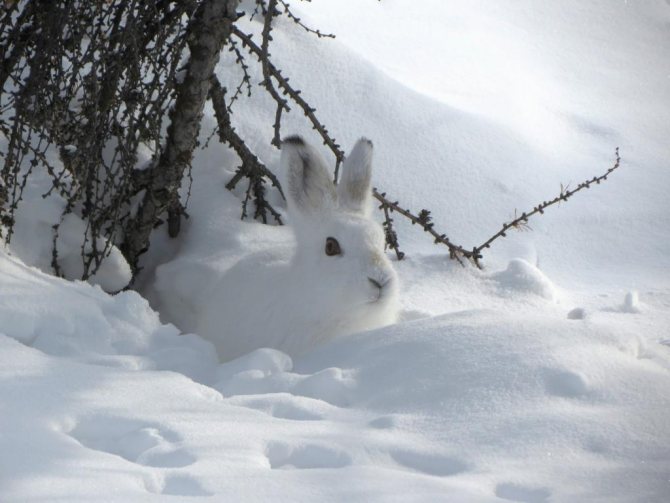
Making loops
The loops are made of soft steel wire. Based on experience, some catchers use horsehair or cords made of nylon, leather, silk, or fiberglass threads. The cable for making a loop should be no more than 1 mm thick. The length of the rope for the loop must be at least one meter and no more than 1.8 meters.
One end of the wire is twisted in such a way as to knit a circle (ring) with a diameter of no more than one centimeter, and the end is secured around the base. Then the opposite end of the wire is inserted into this ring. This creates a loop. Sometimes a steel loop is rubbed with a spruce branch so that the smell of the spruce forest is present in the place of the trap.
After making the loop, it is necessary to check its strength by pulling it with force and jerking.
If the loop is loosely tightened, the hare can easily get out of the trap.
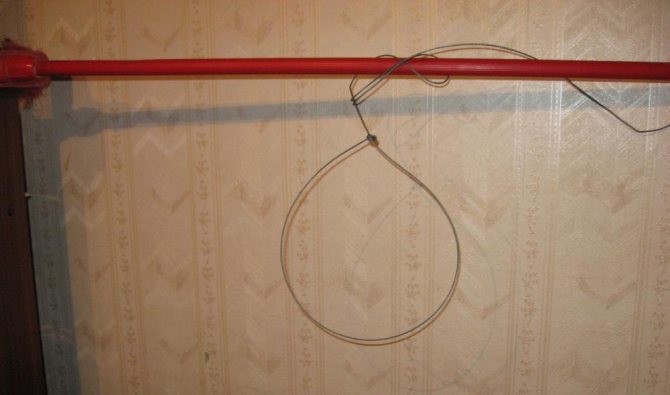
Cleaning up traces at the installation site
Steps for installing the loop and cleaning up traces:
- So, the trap is made, next you need to study the installation site. There must be hare tracks in this place, that is, a hare trail. It is from them that you can understand whether there is a hare there or not.
- After you have inspected the place, you need to remove your traces. Be sure to remove traces from the trail itself, then from its sides. For this you can use ordinary wood chips, pieces of bark and branches, and wood debris. Whatever is either at hand or something you can bring with you. Using these items, the hunter must cover the tracks with snow. If this is not done, the hare may detect a human footprint and run away. In this case, all preparation will be pointless.
- Snares need to be checked daily. At least not less than once every two days. Otherwise, the desired prey will go to wild animals.
What are hinges: design
How to catch a hare with a noose? Make the design correctly. For the loop, nylon cord, leather laces, silk, cables are used, sometimes they are made from horse tail hair or twisted bast. However, the most effective and relatively inexpensive material is metal wire (width - 0.6-1.1 mm, length - 1-1.5 m). It could be steel or copper. Its advantages:
- withstands weight up to 25 kg;
- durable and strong;
- inconspicuous;
- wear-resistant;
- odorless (does not repel).
